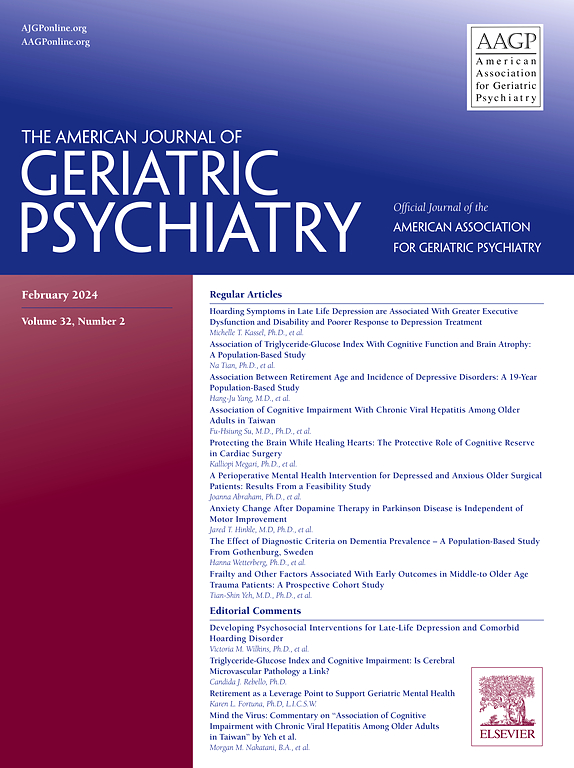Public Awareness Campaigns on Suicide Prevention Are Not Optimized for Older Adults
IF 4.4
2区 医学
Q1 GERIATRICS & GERONTOLOGY
引用次数: 0
Abstract
Objectives
Older adults have the highest rates of suicide of any age group. Suicide prevention campaigns have proved effective for other groups, but initiatives targeting late-life suicide are lacking. We assessed how the websites of the most visible suicide prevention organizations address the needs of older adults.
Methods
We conducted a Google search protocol using the term “suicide prevention organizations” to identify the most visible organizations and conducted a qualitative analysis of their websites to assess their prevention campaigns for older adults.
Results
We identified seven organizations. Five of these acknowledged older adults as a high-risk population, yet none mentioned public health campaigns targeting them. Just two provided resources for older adults.
Conclusions
We identified an imbalance in suicide prevention efforts focused on older adults. Information, when available, was not easy to access on these websites. Addressing this disparity requires increased funding, research, and targeted campaigns for older adults while considering the existence of systemic implicit biases.
求助全文
约1分钟内获得全文
求助全文
来源期刊
CiteScore
13.00
自引率
4.20%
发文量
381
审稿时长
26 days
期刊介绍:
The American Journal of Geriatric Psychiatry is the leading source of information in the rapidly evolving field of geriatric psychiatry. This esteemed journal features peer-reviewed articles covering topics such as the diagnosis and classification of psychiatric disorders in older adults, epidemiological and biological correlates of mental health in the elderly, and psychopharmacology and other somatic treatments. Published twelve times a year, the journal serves as an authoritative resource for professionals in the field.

 求助内容:
求助内容: 应助结果提醒方式:
应助结果提醒方式:


